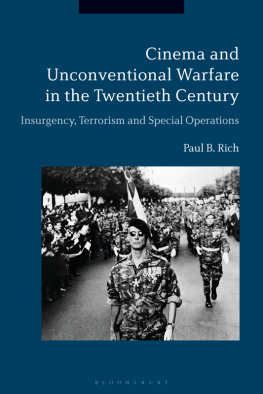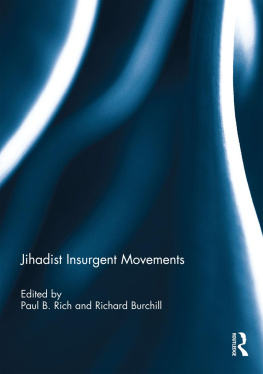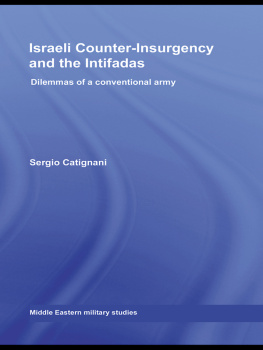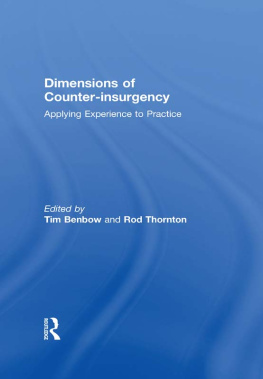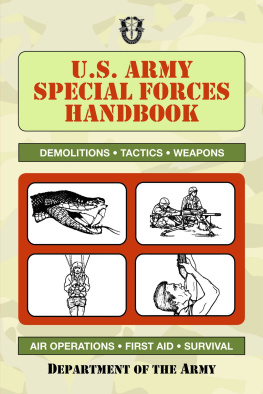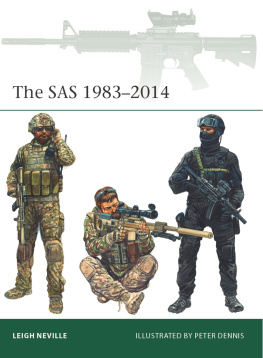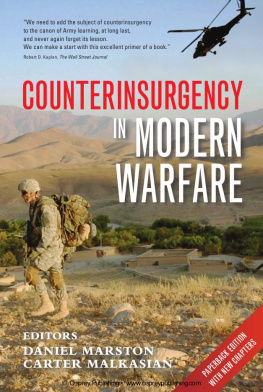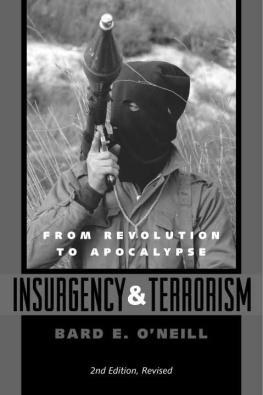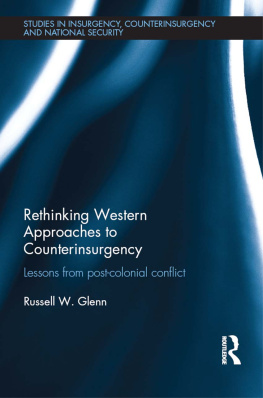Cinema and Unconventional
Warfare in the Twentieth Century
Also available from Bloomsbury
Anatomy of Post-Communist European Defense Institutions: The Mirage of Military Modernity, by Thomas-Durell Young
Armoured Warfare: A Military, Political and Global History, by Alaric Searle
Cinematic Terror: A Global History of Terrorism on Film, by Tony Shaw
Cinema and Unconventional
Warfare in the Twentieth Century
Insurgency, Terrorism and Special
Operations
Paul B. Rich

To Imen, with love
Despite its tendency to mythologize and exaggerate, war cinema can often illuminate the study of armed conflict. This has been broadly recognized for years by scholars on both sides of the Atlantic, although it is astonishing how little attention has been paid to unconventional forms of war, arguably the form of war that characterizes conflict in the present age. I have written this book as a means of complementing the huge body of writing on the cinema of war by focusing on increasingly familiar forms of war in our age involving insurgency, terrorism and special operations. The parameters of this arena of unconventional warfare will always be debated and contested, but, broadly speaking, it is this form of warfare that defines much contemporary conflict in contrast to the great set piece naval, air and land battles of the past.
I have written for both the general and the specialist reader and have attempted, wherever possible, to limit the use of jargon and technical language. The book traverses the fields of military and strategic studies, on the one hand, and film studies on the other, and I hope students in both fields will profit from what I have covered and discussed. I realized, while writing the book, that this is a huge arena that deserves far more specialist study. This will doubtless occur in the years ahead, buttressed by specialist conferences and the odd special issue in an academic journal.
The journal I edit, Small Wars and Insurgencies, had a special issue on Cinema and Insurgencies in August 2015 (Volume 26, No 4) in which I included a paper that forms an early version of of this book on Italian neorealism. It became clear from the various papers in this issue that only a small number of film directors in the decades since 1945 have been bold enough to confront many of the themes of insurgency and counter-insurgency head on. There remain amazing cinematic gaps: no film so far, for instance, has tackled Maos guerrilla war in China from the middle 1930s to the 1949 Revolution. Certainly, the Provisional IRA is far less of an enigma cinematically given the range of studies that have now been published on the Irish conflict, while other terrorist organizations of the 1970s and 1980s have been only poorly portrayed by cinema. Interestingly it has been the Baader Meinhof gang which has been most successfully brought to the screen in film, such as The Baader Meinhof Complex (dir. Uli Edel) which I examine in this study.
Cinema creates a world of its own and often generates powerful myths. These can often provide a substitute for the real understanding of war, especially for those who do not actually get into a real war zone. Few can doubt though that it has been films such as Apocalypse Now, Hamburger Hill and We Were Soldiers that shape many peoples understanding of the Vietnam War, which continues to have an extraordinary hold on the popular imagining of war post 1945. I have attempted, where possible, to examine the mythology of war generated by certain key films with the historical record. As might be expected, some films broadly reflect some of the conflict with quite degrees of realism while others never attempt to do so and glamorize and falsify in the interest of good box office receipts.
I have several people to thank while writing this study. I would especially like to thank the staff of the Reuben Library of the British Film Institute, Tom Durrell Young, Tom Marks, Ian Beckett, Shanthie DSouza, Robert Bunker and Jackie Kalley for reading and commenting on earlier draft chapters. I am also eternally grateful to my wife Imen Yaqoobi for her support and suggestions during the writing of this book.
12 December 2017
In this book, I will be exploring the differing ways that feature films have dealt with the inter-related themes of guerrilla insurgency, terrorism and special operations, forms of conflict that can be termed unconventional war (UW). Film producers have usually been wary of filming this kind of war, though there are several notable films that stand out as giving absorbing representations of unconventional kinds of conflict such as Gillo Pontecorvos The Battle of Algiers (1966), Costa Gavrass State of Siege (1972) or Uli Edels Baader Meinhof Complex (2008).
Unconventional warfare has also often been poorly understood within western militaries. Unconventional warfare consists of terrorist attacks, retaliation by counter-insurgent forces, the blowing up of cars and buildings and draconian police and military controls over civilian populations. Transferring unconventional warfare of this kind to the cinema screen involves controversial ethical and political issues, with the risk of films being banned if they offend cinema audiences or confront too abrasively a societys dominant historical mythology of its past wars. This has not prevented some important films from being released; but they have tended to be made by a relatively small coterie of directors creating what Michalczuk terms political fiction films attempting to inform, document or mobilize public opinion.
Unconventional warfare has become, in the decades since the Second World War, an increasingly important part of modern military conflict. The post-war period certainly saw several conflicts of the inter-state conventional type; the ArabIsraeli wars of 1948, 1956, 1967 and 1973, for instance, as well as the 1965 and 1971 wars between India and Pakistan and the Falklands War between Britain and Argentina in 1982. Film producers, significantly, have largely avoided these wars which have never formed the basis of a major feature film. It is still the case that conventional war cinema continues to pivot around military myths anchored in the First and Second World Wars or military conflicts stretching further back in time such as the American Civil War or the Napoleonic Wars of the early nineteenth century.
The aversion to unconventional war derives from a longstanding dislike of this type of conflict by professional military hierarchies and their accompanying military intellectuals. It is, after all, a form of war that great powers have often not been very good at fighting, given that these powers are also in the business of maintaining large conventional militaries to contain as far as possible threats from rival great powers. Unconventional wars and conflicts have frequently been viewed as annoying forms of small war on the fringes of empire that threatened to divert resources and manpower The historical record is littered with instances of this problem, with the ruins of Hadrians Wall in the north of England standing as one major defensive remedy to contain incursions from warrior Scottish tribes as well as avoiding needless losses by Roman legions in misty Highland wastes.
What, though, do we exactly mean by unconventional war? This is a type of warfare involving relatively small groups of mobile fighters operating across a wide and sometimes vague battle space, where the conflict might be viewed considerably differently by the opposing parties. It is also a form of war fought not only by sub-state groupings and small nations and tribal societies but also by specialized sections of conventional militaries in the form of special operations. Unconventional warriors have a range of tactics, including sabotage, raiding, kidnapping, propaganda and assassination; tactics that in turn can lead to draconian political and military responses, rationalized very often in more recent times through various doctrines of counter-insurgency. Some unconventional formations act as auxiliaries to full-scale armies, such as those operating behind enemy lines in the Second World War, like the SAS, LRDG and US Rangers. Others form part of a wider guerrilla strategy that may eventually escalate into full-scale conventional conflict, as occurred in the case of the wars of national liberation in China and Vietnam. Unconventional war forms a major component in the historiography of war, even if it runs contrary to conventional precepts of warfare centred on hierarchical chains of command, battlefield honour and large-scale conflict by rival professional militaries.
Next page
